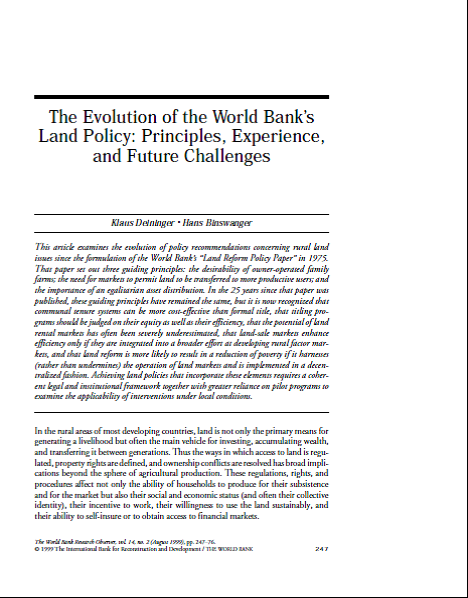Resource information
This article examines the evolution of policy recommendations concerning rural land issues since the formulation of the World Bank’s “Land Reform Policy Paper” in 1975. That paper set out three guiding principles: the desirability of owner-operated family farms; the need for markets to permit land to be transferred to more productive users; and the importance of an egalitarian asset distribution. In the 25 years since that paper was published, these guiding principles have remained the same, but it is now recognized that communal tenure systems can be more cost-effective than formal title, that titling programs should be judged on their equity as well as their efficiency, that the potential of land rental markets has often been severely underestimated, that land-sale markets enhance efficiency only if they are integrated into a broader effort at developing rural factor markets, and that land reform is more likely to result in a reduction of poverty if it harnesses (rather than undermines) the operation of land markets and is implemented in a decentralized fashion. Achieving land policies that incorporate these elements requires a coherent legal and institutional framework together with greater reliance on pilot programs to examine the applicability of interventions under local conditions.



